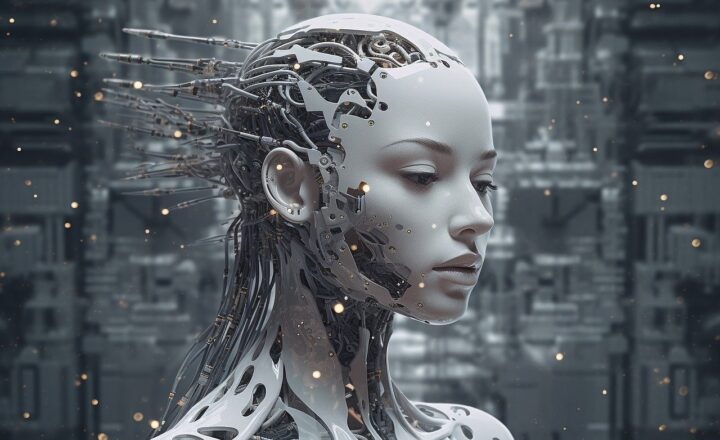Exploring the Differences Between AI, Machine Learning, and Deep Learning
November 11, 2024

The rapid evolution of technology has ushered in a new era of artificial intelligence (AI) that is fundamentally altering the way we approach various tasks and challenges. AI encompasses a broad spectrum of capabilities and innovations, with Machine Learning (ML) and Deep Learning (DL) being integral elements that contribute to its functionality. Understanding the distinctions between these three areas is crucial for anyone looking to engage with modern technology, whether as a professional, a student, or a curious enthusiast.
1. Defining the Terms: AI, Machine Learning, and Deep Learning
Before diving into the differences, let’s clarify each term:
– Artificial Intelligence (AI): AI refers to the capability of machines to perform tasks that typically require human intelligence. These tasks include reasoning, problem-solving, perception, language understanding, and more. AI can be classified into two main categories: narrow AI, which is designed for specific tasks, and general AI, which would replicate human cognitive abilities across a range of tasks.
– Machine Learning (ML): A subset of AI, ML focuses on the idea that systems can learn from data, identify patterns, and make decisions with minimal human intervention. In ML, algorithms take in training data, learn from it, and then make predictions or decisions based on new data. ML can be further divided into supervised learning, unsupervised learning, and reinforcement learning.
– Deep Learning (DL): A further subset of ML, Deep Learning employs neural networks with many layers (hence ‘deep’). DL mimics the human brain’s neural structure, using layers of interconnected nodes to process data. The complexity of these networks allows them to learn vast amounts of data and discover intricate patterns, making them particularly effective for tasks such as image and speech recognition.
2. The Hierarchical Relationship
To illustrate the relationship between AI, ML, and DL, picture a hierarchy:
– At the broadest level, AI is the umbrella term. It encompasses all systems capable of simulating human intelligence.
– Within AI, we find Machine Learning as a subset. ML focuses specifically on the data-driven approach to enable machines to learn and adapt.
– Deep Learning resides within Machine Learning. It deals with complex data representations and typically requires more extensive computational power and larger datasets.
By understanding this hierarchy, it’s easier to appreciate how they interconnect and how one builds upon the others.
3. Key Differences Between AI, ML, and DL
Let’s explore the fundamental differences between these three areas more closely:
| Feature | Artificial Intelligence (AI) | Machine Learning (ML) | Deep Learning (DL) |
|——————–|———————————————|——————————————–|————————————————|
| Definition | General capability to perform tasks | Algorithms that learn from data | Subset of ML using neural networks |
| Focus | Mimicking human intelligence | Learning from and making predictions using data | Understanding complex patterns in large datasets |
| Data Requirement| Can operate with predefined rules | Requires large datasets for better accuracy | Needs vast amounts of data to train effectively |
| Computation Power| Variable (depends on the model used) | Less intensive compared to DL | High – requires GPUs and advanced hardware |
| Applications | Chatbots, robotic process automation | Recommendation systems, fraud detection | Image and speech recognition, self-driving cars |
This table clearly shows how each term varies in terms of focus, capabilities, data needs, and computational requirements. Understanding these differences allows developers, businesses, and industries to choose appropriate technologies for their needs, especially when venturing into AI applications.
4. Real-World Applications
All three concepts – AI, ML, and DL – find common ground across various industries, improving processes and enhancing user experiences:
– AI in Everyday Life: From virtual assistants like Siri and Alexa to smart home devices that learn from user behaviors, AI is prevalent in our daily lives. These systems can make decisions based on data and past experiences, creating a seamless user experience.
– Machine Learning in Business: Companies utilize ML to analyze customer data for targeted marketing, assess risks in finance, and improve product recommendations. Machine learning systems continuously learn from new data, allowing businesses to adapt their strategies effectively.
– Deep Learning in Advanced Tech: Deep learning powers the most sophisticated applications in technology, such as autonomous vehicles that recognize and react to their surroundings, along with facial recognition systems that unlock smartphones. The deep neural networks involved in these processes can analyze visual content at a level that traditional algorithms cannot match.
The convergence of AI, ML, and DL fosters innovations that enhance efficiency, accuracy, and user satisfaction across sectors.
5. Challenges and Limitations
While the advancements in AI, ML, and DL are astounding, they come with challenges:
– Data Dependency: ML and DL models require enormous datasets for adequate training. Lack of relevant data can lead to underperformance and inaccurate predictions.
– Computational Complexity: Deep Learning models can be computationally expensive, demanding high-performance hardware and significant energy resources, which can be a barrier to adoption.
– Bias and Ethical Issues: AI systems can inherit biases from their training data, leading to ethical concerns and reinforcing societal biases. Transparency and fairness in machine learning algorithms are critical to addressing these issues.
– Interpretability: Deep learning models are often criticized for being “black boxes,” making it difficult to understand how they arrive at specific conclusions. This lack of transparency poses challenges in sensitive fields like healthcare and criminal justice.
By acknowledging these challenges, researchers and developers can work toward more responsible AI implementations and create solutions that are both effective and ethical.
6. The Future of AI, ML, and DL
The landscape of AI, ML, and DL is rapidly evolving:
– AI’s Continued Integration: AI will continue to pervade various aspects of life. As its capabilities grow, so does the potential for automation and innovation.
– ML’s Adaptive Learning: Machine Learning will become even more sophisticated, learning from lesser data and adapting in real-time to new information, thereby improving its accuracy and responsiveness.
– Growth of Deep Learning: Deep Learning research is expected to flourish, leading to applications that we can’t currently envision. Advances in algorithms and hardware will enable broader use in diverse areas such as healthcare, finance, and transportation.
As these technologies develop, they will reshape industries and redefine how we solve complex problems.
Conclusion
The distinctions between AI, Machine Learning, and Deep Learning are critical for understanding the technology driving innovation across various sectors. Grasping these concepts not only empowers individuals in tech fields but also educates users about the tools and technologies shaping their experiences. A deeper appreciation of how these technologies interconnect will enable more informed discussions about their implications and potential impacts on our lives.
In an age where knowledge about AI is increasingly vital, fostering understanding and engagement will be essential in ensuring everyone benefits from technological advancements and safeguards against possible challenges ahead.






